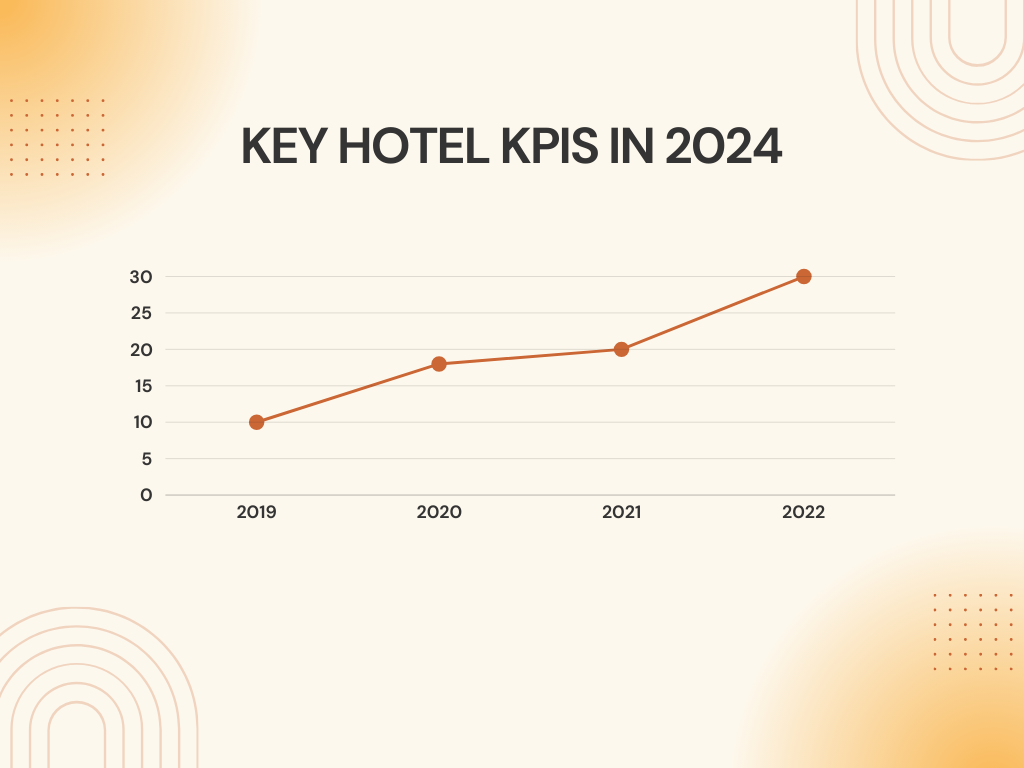If you’re not tracking your efforts, how can you tell if they’re working? That’s where Key Performance Indicators (KPIs) come into the picture.
Hotel KPIs are quantifiable metrics that help hospitality businesses evaluate the performance of their hotel. These KPIs provide actionable insights into numerous aspects of hotel operations, allowing you to make informed decisions to improve guest satisfaction, boost operational efficiency, and gain a competitive edge.
But with so many KPIs in the hospitality industry that could be measured, how can you decide which are the ones that you should focus on?
This blog will walk you through the top 5 hotel KPIs that every hotel owner should track in order to analyze the results of their efforts.
5 Most Crucial Hotel KPIs You Should Be Tracking
1. Average Daily Rate (ADR)
Average Daily Rate (ADR) is an important hotel performance metric that represents the average revenue earned per occupied room on a given day. You can calculate ADR by taking the total room revenue earned from all rooms sold and dividing it by the total number of rooms sold.
This KPI provides valuable insights into the revenue management strategy and financial performance of your hotel. It helps you understand how much revenue is being earned from each occupied room and clearly indicates the effectiveness of your pricing strategy.
2. Revenue per Available Room (RevPAR)
Revenue per Available Room (RevPAR) is arguably the most essential KPIs in the hospitality industry. It helps to determine the revenue earned from each available room – whether occupied or not. It combines both average daily rate (ADR) and room occupancy to provide insights into a hotel’s financial performance.
The importance of RevPAR lies in its ability to provide a comprehensive view of a hotel’s revenue performance. It helps hoteliers in strategic planning and decision-making when it comes to allocating resources, adjusting pricing strategies, or developing marketing campaigns.
3. Occupancy Rate
Occupancy rate is another key hospitality metric that indicates the percentage of available rooms occupied during a specific period.
It helps determine the demand for your hotel. A higher value indicates strong demand, high customer satisfaction, and strong repeat business, while a low value suggests that there’s a need for effective promotional strategies to attract guests and increase bookings.
4. Gross Operating Profit per Available Room (GOPPAR)
Gross Operating Profit per Available Room (GOPPAR) is a hospitality industry metric that provides a better picture of your hotel’s financial health in comparison to RevPAR. It tells a hotel’s profitability by measuring the gross operating profit earned per available room.
Gross operating profit is the total revenue generated from operations minus the total operating expenses.
GOPPAR is a key metric for revenue management, providing a holistic view of your hotel’s financial performance by taking both revenue and operating expenses into account. With regular tracking of GOPPAR, you can ensure that your strategies not only drive revenue growth but also improve the overall profitability of your hotel.
5. Customer Satisfaction Score (CSAT)
In the hospitality industry, CSAT gauges guest satisfaction and helps hotel owners understand how well they meet or exceed their guest expectations.
CSAT is considered one of the vital hotel KPIs to measure guest satisfaction and improve the overall guest experience. With regular tracking of CSAT scores, hotel owners or managers can identify trends, pinpoint key areas of improvement, and determine the effectiveness of their customer service initiatives. Accordingly, they can plan and adjust their marketing strategies to boost guest loyalty and drive more positive reviews.
Key Takeaways
- KPIs in the hospitality industry are crucial for evaluating performance. By regularly tracking these metrics, hotel owners can gauge the effectiveness of their strategies and make data-driven decisions.
- By combining occupancy rate and ADR, RevPAR provides a comprehensive view of a hotel’s revenue performance.
- GOPPAR metric helps hoteliers get a deeper financial perspective by considering both revenue and expenses.
- CSAT helps hotel managers measure guest satisfaction, providing insights into key improvements to boost guest loyalty and positive reviews.




